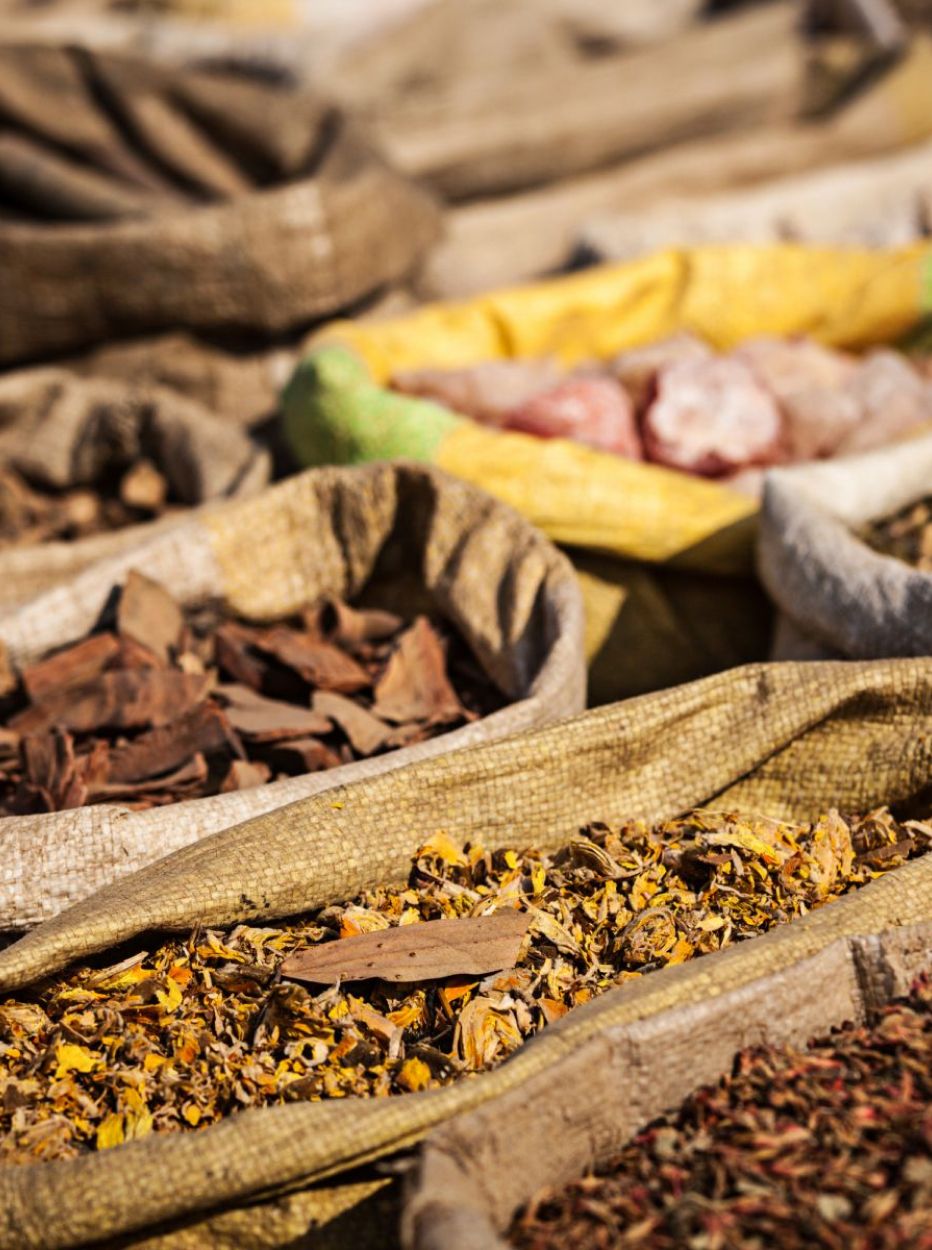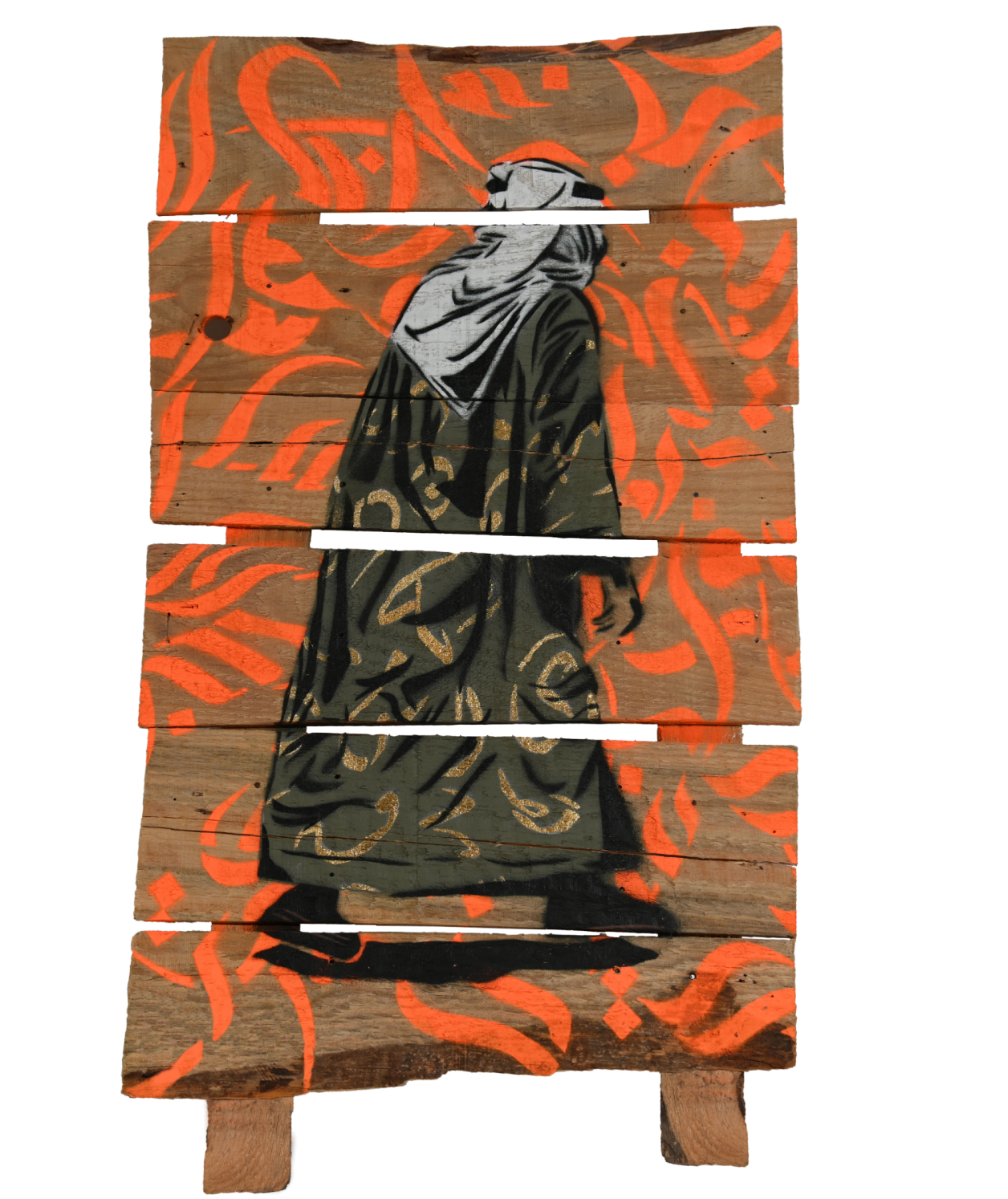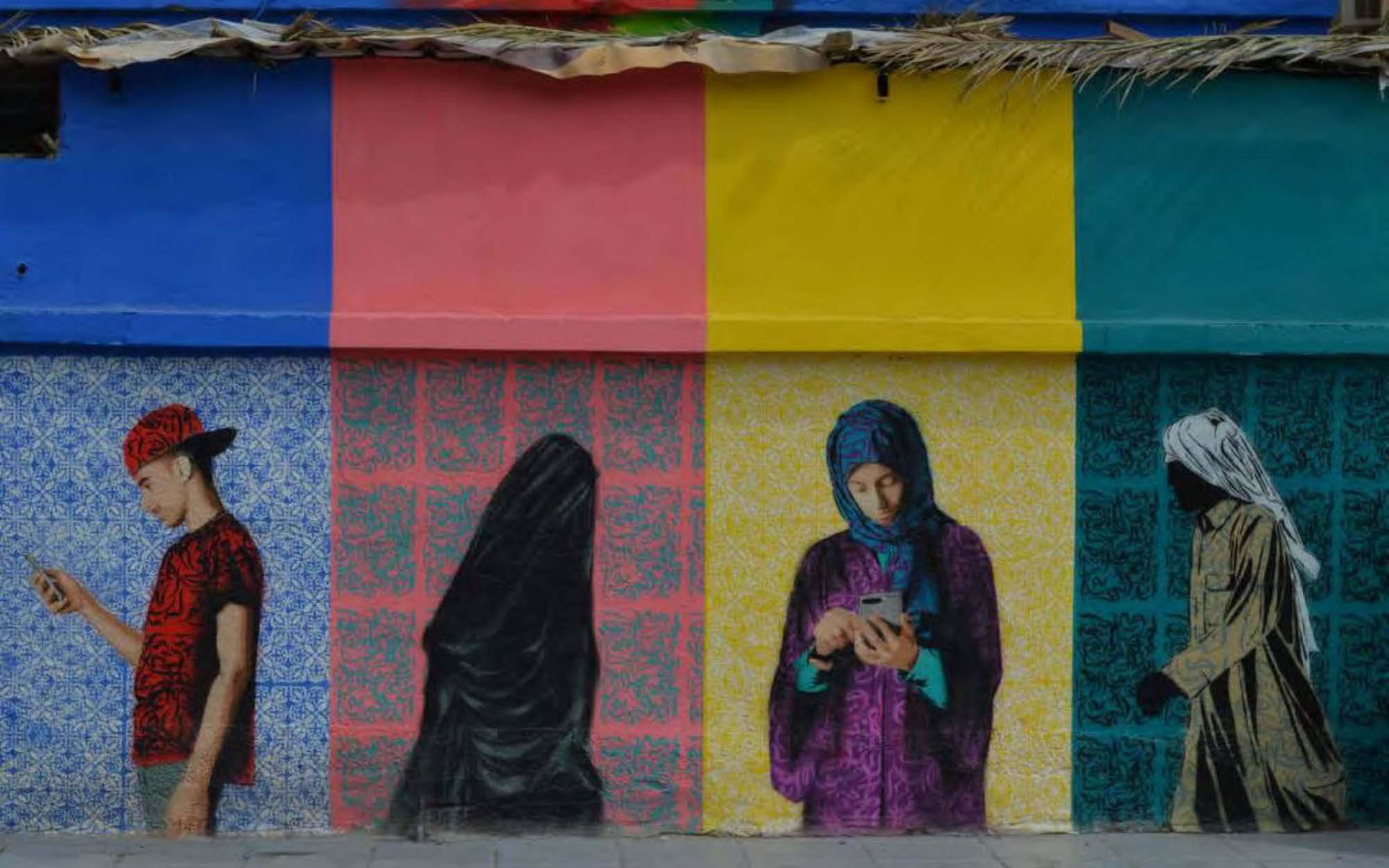The fragrant roads of the incense trade route
Spice souk in Saudi Arabia.
“In meadows of purple roses is their dwelling, shaded with libanos (frankincense) and laden with golden fruits... Over the lovely spot spreads the odor of those who mix every kind of spice with far-seen fire on the altars of the gods.” — Callixeinus of Rhodes, 2nd Century BCE, talking about the Red Sea commerce
To visit in Saudi Arabia, one that leads you along an ancient aromatic route of legends.

Cultivated from a desert tree known as Boswellia Sacra, frankincense is dried sap that forms as waxy, pale yellow and translucent nuggets. They grow only in southern Arabia and northeastern Africa, but the best quality grows in the deserts of southern Oman where the climate has the perfect combination of humidity, soil, temperature, sun and water.
Ancient civilizations valued frankincense for a variety of purposes. Babylonians, Sumerians, Egyp-tians, Greeks and Romans all used frankincense as offerings to their gods, as well as rituals and as medicines. The Romans used it to hide odors, be it as a deodorant, a perfume for cremation, or even a perfume for the sewers. The Babylonians would burn roughly 24 tons every year as an of-fering to their father god Marduk.
Historically, famous roads were defined by the goods being carried across. Think of the Silk Road, The Tea Horse Road, The Amber Road and the Incense Trade Route. The value of frankincense outweighed the harsh desert conditions of the Arabian Peninsula, which led to the development of a trade network that made use of more than a couple dozen Arabian communities, as well as caravanserai, forts and clever irrigation and water storage systems. The roads would connect Oman and Yemen to the Nile Valley, Mesopotamia, Persia, Greece and Rome, transporting not just frankincense but also myrrh, precious stones, fine textiles and more. The route thrived between the 3rd Century BCE and the 2nd Century CE. After caravans made their way through the various kingdoms in what is now Yemen, those headed for Egypt, Greece and Rome would straddle the Red Sea coast until reaching Petra in the Kingdom of Nabataea.

Spice souk in Saudi Arabia.
Oth-er caravans headed for Mesopotamia, Asia Minor and the Parthian Empire by travelling through Qaryat Al-Faw towards Gerrha and northeastward, or from AlUla to Tayma and northward.
All along the road, the merchants keep paying for food, water, lodging, tolls and taxes. High prices were the logical consequence: one pound of frankincense would have cost about a week’s wage for a skilled laborer.
Here are just a few of the prominent stops along the Incense Route that you can visit today. They were all heavily influenced by the cultures that they connected with and they were all rich and af-fluent during the height of the route's prominence.
Bordering Yemen, Najran would be the first stop in what is now Saudi Arabia. South of modern day Najran city is the site of Al-Ukhdood, which was a focal point where the routes branched into two general directions: the ones leading north through the Ḥijaz towards Egypt and the Levant and those leading to the northeast via Gerrha near the Arabian Gulf towards Mesopotamia and others. The remains of a fortress and the ancient roadway can be found there today.
Skirting the northwestern edge of the Empty Quarter and lying 700 kilometers southwest of pre-sent-day Riyadh, Qaryat Al-Faw was at the crossroads of trade routes that led from southern to northeastern Arabia. With its red-clay palaces, market, temples, and cemetery, it acted as the capital of Kindah (1st Century BCE to the 4th Century CE), one of three great tribal kingdoms of pre-Islamic Arabia.
Its affluence and prominence were displayed in the large, open residences with expensive objects either imported from afar or produced locally while still incorporating Roman and Greek features.
From Qaryat Al-Faw, the Incense Route would run northeast to Thaj and Gerrha, taking the frank-incense towards Mesopotamia and Persia.
Al-Ula boasts an extensive and diverse ancient history as the primary locale of the settlement of Dedan (late 9th Century BCE), the Kingdom of Lihyan (7th-2nd Century BCE), and, most famous-ly, the Nabataean Kingdom (2nd Century BCE to 2nd Century CE). The Nabataeans gave the area the best of its culture, including tomb facades carved into the rock faces, innovative irrigation and water management, and agriculture. All the while, the city grew wealthy by taxing Incense Route caravans and providing supplies and protection.
The tomb facades, decorated with symbols that feature Roman and Greek influences, remain till today.
Located about 110 kilometers northeast of Al-Ula and sitting in the western part of Al-Nafud de-sert, Tayma is one of the oldest and most important archaeological sites in the region, with settle-ments dated back to 3rd millennium BCE. As with the others, its wealth and significance were thanks to its prominent position on the Incense Route.
Points of interest in Tayma include a well that has been there since the 6th Century BCE, ancient castles and city walls, and museums littered with artifacts from different civilizations, all with Ara-maic, Lihyanite, Thamudic and Nabataean language inscriptions.
Stepping into the footprints of the ancients is an unforgettable experience that is not to be missed.
Ahmad Dialdin, a Saudi Editor and senior feature writer, who writes about art and culture. He also works at the Ministry of Culture.


